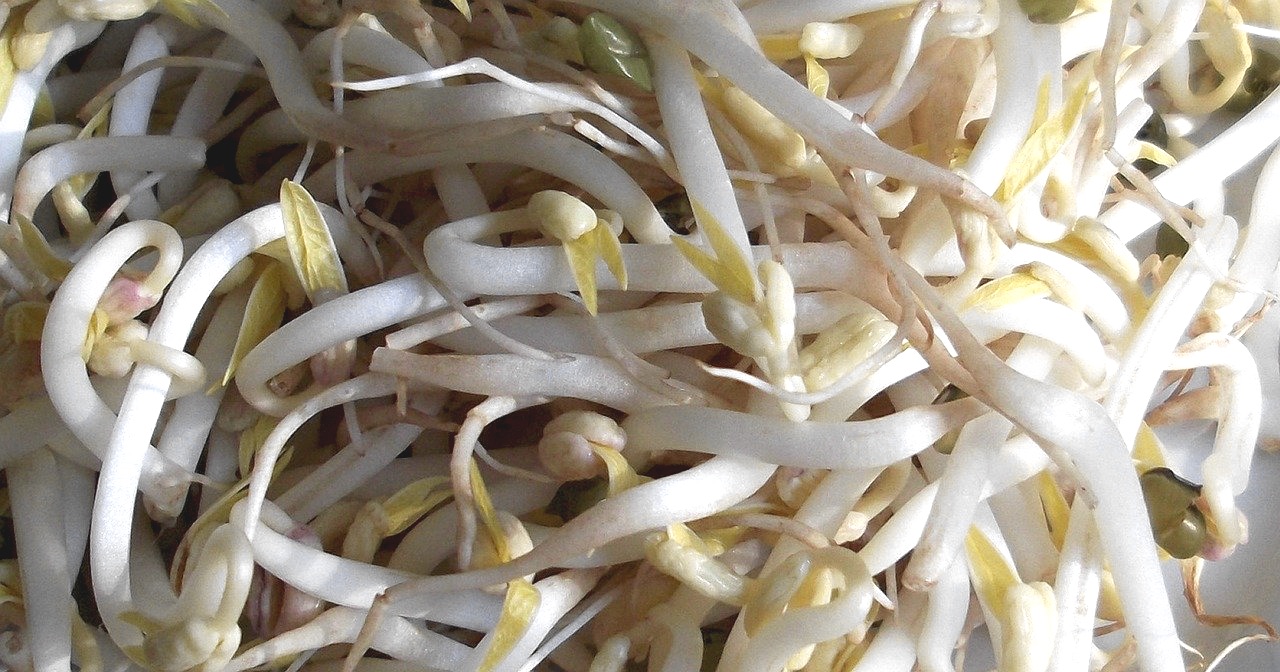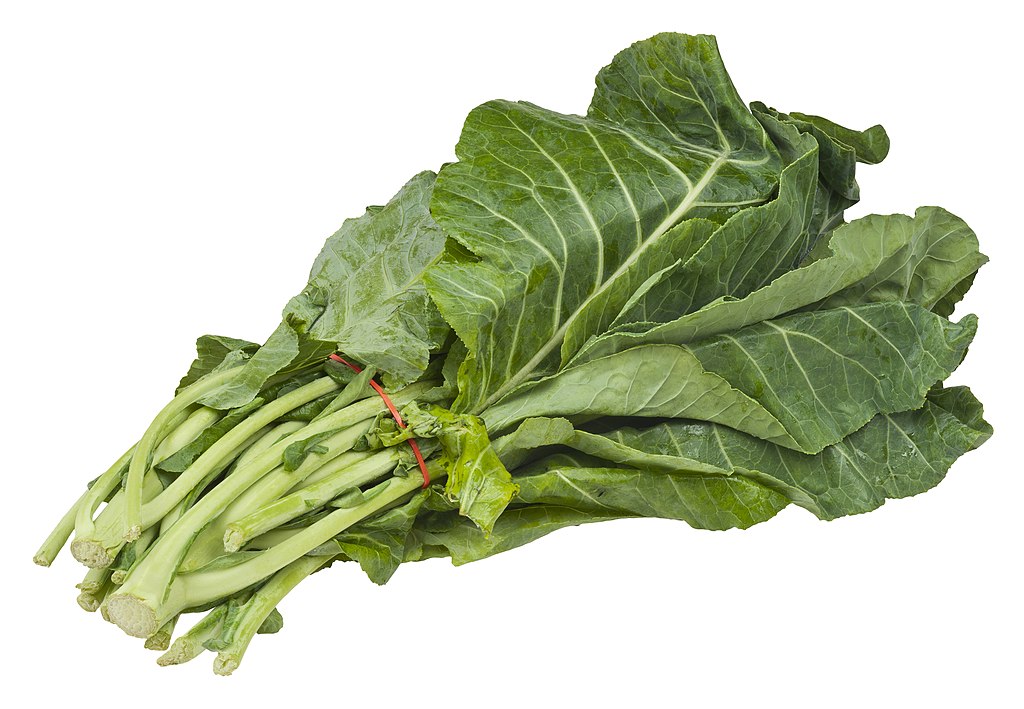Bean Sprouts vs. Collard Greens
Nutrition comparison of Bean Sprouts and Collard Greens
Ever wonder how your favorite foods stack up against each other in terms of nutrition?
We compared the nutritional contents of
bean sprouts
versus
collard greens
(100g each)
below using 2020 USDA and NIH data[1].
For a quick recap of significant nutrients and differences in bean sprouts and collard greens:
- Both bean sprouts and collard greens are high in Vitamin C.
- Collard green has more folate.
- Collard green is a great source of potassium.
- Collard green is an excellent source of Vitamin A, Vitamin K, calcium and dietary fiber.
USDA sources for nutritional information: Bean Sprouts (Mung beans, mature seeds, sprouted, raw) and Collard Greens (Collards, raw) . Have a correction or suggestions? Shoot us an email.
Calories and Carbs
calories
Bean sprouts and collard greens contain similar amounts of calories - bean sprout has 30 calories per 100 grams and collard green has 32 calories.
For macronutrient ratios, bean sprouts is heavier in carbs, lighter in fat and similar to collard greens for protein. Bean sprouts has a macronutrient ratio of 32:63:5 and for collard greens, 31:55:14 for protein, carbohydrates and fat from calories.
Macro Ratios from Calories:
| Bean Sprouts | Collard Greens | |
|---|---|---|
| Protein | 32% | 31% |
| Carbohydrates | 63% | 55% |
| Fat | 5% | 14% |
| Alcohol | ~ | ~ |
carbohydrates
Bean sprouts and collard greens contain similar amounts of carbs - bean sprout has 5.9g of total carbs per 100 grams and collard green has 5.4g of carbohydrates.
The carbs in bean sprouts are made of 70% sugar and 30% dietary fiber, whereas the carbs in collard greens comprise of 90% dietary fiber and 10% sugar.
dietary fiber
Collard green is an excellent source of dietary fiber and it has 122% more dietary fiber than bean sprout - bean sprout has 1.8g of dietary fiber per 100 grams and collard green has 4g of dietary fiber.
sugar
Bean sprouts and collard greens contain similar amounts of sugar - bean sprout has 4.1g of sugar per 100 grams and collard green has 0.46g of sugar.
Protein
protein
Bean sprouts and collard greens contain similar amounts of protein - bean sprout has 3g of protein per 100 grams and collard green has 3g of protein.
Fat
saturated fat
Both bean sprouts and collard greens are low in saturated fat - bean sprout has 0.05g of saturated fat per 100 grams and collard green has 0.06g of saturated fat.
Vitamins
Vitamin C
Both bean sprouts and collard greens are high in Vitamin C. Collard green has 167% more Vitamin C than bean sprout - bean sprout has 13.2mg of Vitamin C per 100 grams and collard green has 35.3mg of Vitamin C.
Vitamin A
Collard green is an excellent source of Vitamin A and it has 250 times more Vitamin A than bean sprout - bean sprout has 1ug of Vitamin A per 100 grams and collard green has 251ug of Vitamin A.
Vitamin E
Collard green has 21 times more Vitamin E than bean sprout - bean sprout has 0.1mg of Vitamin E per 100 grams and collard green has 2.3mg of Vitamin E.
Vitamin K
Collard green is an excellent source of Vitamin K and it has 12 times more Vitamin K than bean sprout - bean sprout has 33ug of Vitamin K per 100 grams and collard green has 437.1ug of Vitamin K.
The B Vitamins
Collard green has more folate. Both bean sprouts and collard greens contain significant amounts of thiamin, riboflavin, niacin, pantothenic acid and Vitamin B6.
| Bean Sprouts | Collard Greens | |
|---|---|---|
| Thiamin | 0.084 MG | 0.054 MG |
| Riboflavin | 0.124 MG | 0.13 MG |
| Niacin | 0.749 MG | 0.742 MG |
| Pantothenic acid | 0.38 MG | 0.267 MG |
| Vitamin B6 | 0.088 MG | 0.165 MG |
| Folate | 61 UG | 129 UG |
Minerals
calcium
Collard green is an excellent source of calcium and it has 16 times more calcium than bean sprout - bean sprout has 13mg of calcium per 100 grams and collard green has 232mg of calcium.
iron
Bean sprout has 94% more iron than collard green - bean sprout has 0.91mg of iron per 100 grams and collard green has 0.47mg of iron.
potassium
Collard green is a great source of potassium and it has 43% more potassium than bean sprout - bean sprout has 149mg of potassium per 100 grams and collard green has 213mg of potassium.
Antioxidants and Phytonutrients
flavonoids
Naturally occuring in fruits and vegetables, flavonoids are associated with many health benefits and used in a variety of medicinal and pharmaceutical applications. [2][3]
For specific flavonoid compounds,
| Bean Sprouts | Collard Greens | |
|---|---|---|
| kaempferol | 0.33 mg | 8.74 mg |
| Quercetin | 0.15 mg | 2.57 mg |
| luteolin | ~ | 0.08 mg |
carotenoids
Carotenoids are micronutrients commonly found in plants and some animal products. An example is beta-carotene, the notable carotenoid which is a popular source of Vitamin A.[4][5]
For specific types of carotenoids, both bean sprouts and collard greens contain small amounts of alpha-carotene.
| Bean Sprouts | Collard Greens | |
|---|---|---|
| beta-carotene | 6 UG | 2991 UG |
| alpha-carotene | 6 UG | 14 UG |
| lutein + zeaxanthin | ~ | 4323 UG |
Omega-3 and Omega-6
omega 3s
For omega-3 fatty acids, collard green has more alpha linoleic acid (ALA) than bean sprout per 100 grams.
| Bean Sprouts | Collard Greens | |
|---|---|---|
| alpha linoleic acid | 0.016 G | 0.108 G |
| Total | 0.016 G | 0.108 G |
omega 6s
Comparing omega-6 fatty acids, both bean sprouts and collard greens contain significant amounts of linoleic acid.
| Bean Sprouts | Collard Greens | |
|---|---|---|
| linoleic acid | 0.042 G | 0.082 G |
| other omega 6 | ~ | 0.002 G |
| Total | 0.042 G | 0.084 G |
Customize your serving size
The comparison below is by weight, but sometimes 100g isn't that intuitive of a measurement for food. View a custom portion comparison (e.g. cups, oz, package).
You can try adding or subtracting the amount of either Bean Sprouts or Collard Greens .
Note: The specific food items compared are: Bean Sprouts (Mung beans, mature seeds, sprouted, raw) and Collard Greens (Collards, raw) .
Bean Sprouts g
()
|
Daily Values (%) |
Collard Greens g
()
|
|||||
|---|---|---|---|---|---|---|---|
| KCAL % |
|
5% | calories | 5% |
|
KCAL % | |
| G % |
|
5% | carbohydrates | 5% |
|
G % | |
| G % |
|
5% | dietary fiber | 5% |
|
G % | |
| G | 5% | sugar | 5% | G | |||
| G % |
|
5% | total fat | 5% |
|
G % | |
| G % |
|
5% | saturated fat | 5% |
|
G % | |
| G | 5% | monounsaturated fat | 5% | G | |||
| G | 5% | polyunsaturated fat | 5% | G | |||
| G | 5% | trans fat | 5% | G | |||
| MG | 5% | cholesterol | 5% | MG | |||
| MG % |
|
5% | sodium | 5% |
|
MG % | |
| 5% | Vitamins and Minerals | 5% | |||||
| UG % |
|
5% | Vitamin A | 5% |
|
UG % | |
| MG % |
|
5% | Vitamin C | 5% |
|
MG % | |
| IU % |
|
5% | Vitamin D | 5% |
|
IU % | |
| MG % |
|
5% | calcium | 5% |
|
MG % | |
| MG % |
|
5% | iron | 5% |
|
MG % | |
| MG % |
|
5% | magnesium | 5% |
|
MG % | |
| MG % |
|
5% | potassium | 5% |
|
MG % | |
| MG % |
|
5% | thiamin (Vit B1) | 5% |
|
MG % | |
| MG % |
|
5% | riboflavin (Vit B2) | 5% |
|
MG % | |
| MG % |
|
5% | niacin (Vit B3) | 5% |
|
MG % | |
| MG % |
|
5% | Vitamin B6 | 5% |
|
MG % | |
| MG % |
|
5% | pantothenic acid (Vit B5) | 5% |
|
MG % | |
| UG % |
|
5% | folate (Vit B9) | 5% |
|
UG % | |
| UG % |
|
5% | Vitamin B12 | 5% |
|
UG % | |
| MG % |
|
5% | Vitamin E | 5% |
|
MG % | |
| UG % |
|
5% | Vitamin K | 5% |
|
UG % | |
| G % |
|
5% | protein | 5% |
|
G % | |
| UG % |
|
5% | biotin (Vit B7) | 5% |
|
UG % | |
| MG % |
|
5% | choline | 5% |
|
MG % | |
| MG % |
|
5% | chlorine | 5% |
|
MG % | |
| UG % |
|
5% | chromium | 5% |
|
UG % | |
| MG % |
|
5% | copper | 5% |
|
MG % | |
| UG % |
|
5% | fluoride | 5% |
|
UG % | |
| UG % |
|
5% | iodine | 5% |
|
UG % | |
| MG % |
|
5% | manganese | 5% |
|
MG % | |
| UG % |
|
5% | molybdenum | 5% |
|
UG % | |
| MG % |
|
5% | phosphorus | 5% |
|
MG % | |
| UG % |
|
5% | selenium | 5% |
|
UG % | |
| MG % |
|
5% | zinc | 5% |
|
MG % | |
| G | 5% | Water | 5% | G | |||
| G | 5% | Starch | 5% | G | |||
| G | 5% | Alcohol | 5% | G | |||
FAQ
Does bean sprouts or collard greens contain more calories in 100 grams?Bean sprouts and collard greens contain similar amounts of calories - bean sprout has 30 calories in 100g and collard green has 32 calories.
Is bean sprouts or collard greens better for protein?
Bean sprouts and collard greens contain similar amounts of protein - bean sprout has 3g of protein per 100 grams and collard green has 3g of protein.
Does bean sprouts or collard greens have more carbohydrates?
By weight, bean sprouts and collard greens contain similar amounts of carbs - bean sprout has 5.9g of carbs for 100g and collard green has 5.4g of carbohydrates. the carbs in bean sprouts are made of 70% sugar and 30% dietary fiber, whereas the carbs in collard greens comprise of 90% dietary fiber and 10% sugar.
Does bean sprouts or collard greens contain more calcium?
Collard green is a rich source of calcium and it has 16 times more calcium than bean sprout - bean sprout has 13mg of calcium in 100 grams and collard green has 232mg of calcium.

